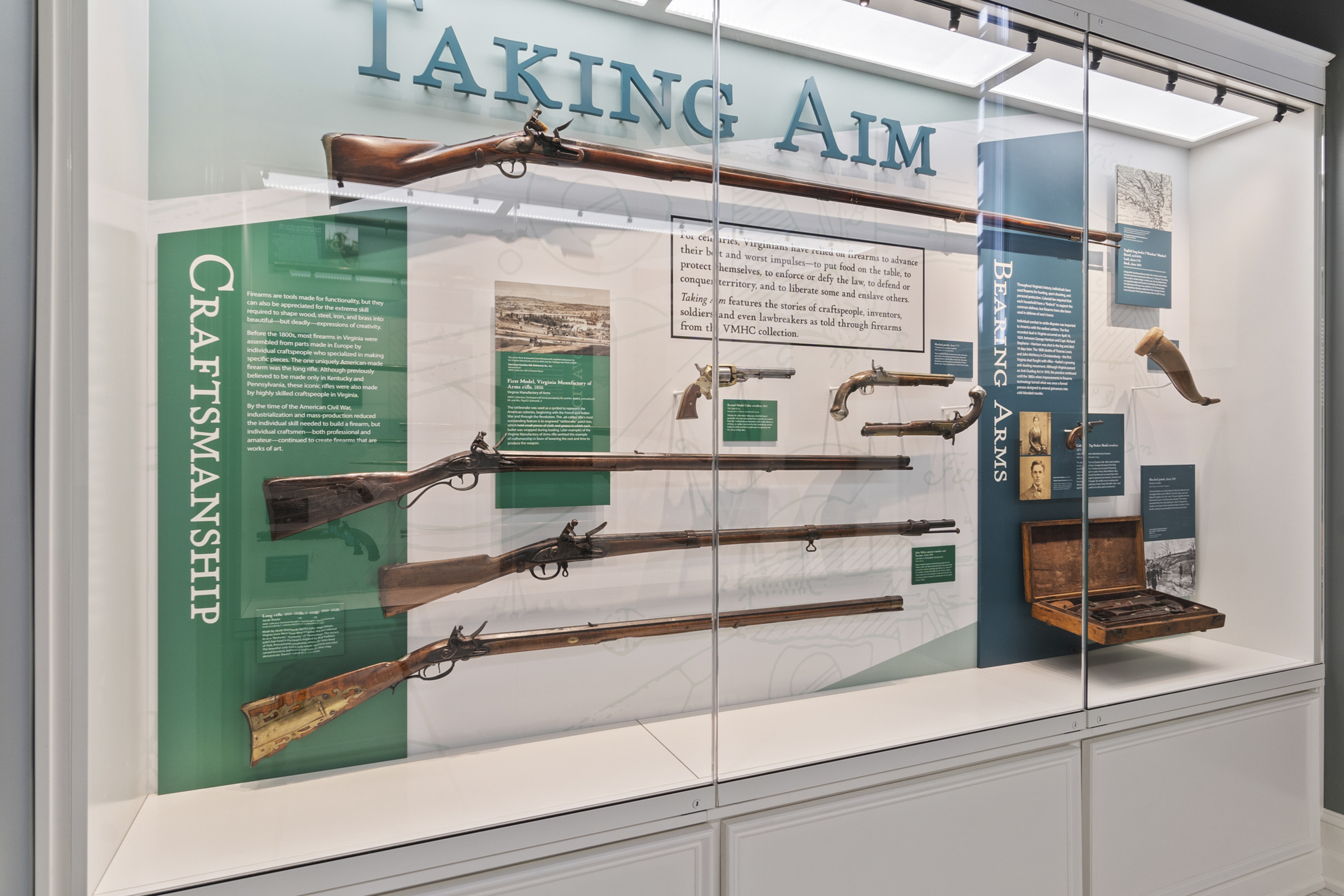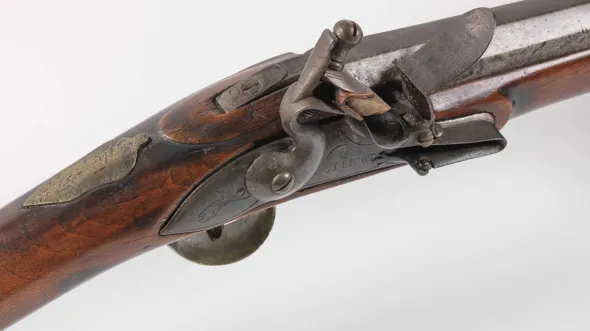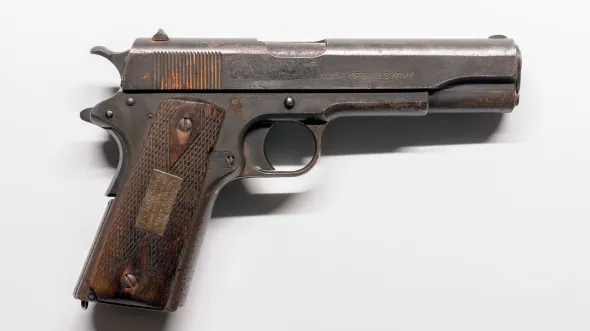About the Exhibition: For centuries, Virginians have relied on firearms to advance their best and worst impulses—to put food on the table, to protect themselves, to enforce or defy the law, to defend or conquer territory, and to liberate some and enslave others.
Highlights:
- A massive 7-foot, 4-inch English long fowler often referred to as the “Woodson” musket. According to family tradition, the oldest part of the musket (dating to the mid-1600s) was used by Lt. Col. Thomas Ligon, who helped Sara Woodson defend her Prince George County home during the Third Anglo-Powhatan War. Many Woodson descendants refer to themselves as “potato hole” or “washtub” Woodsons based on their relationship to Sara Woodson’s sons—John (10 years old) and Robert (12 years old). During the skirmish, John was reportedly hidden under a washtub and Robert in a “potato hole” (cellar). Many well-known figures in U.S. history are related to the Woodson family including Dolly Madison (first lady of the United States) and Jesse Woodson James.
- A Model 1911 pistol (VMHC) belonging to U.S. Army Col. Charles Hancock Reed, who participated in the rescue of Lipizzaner horses of Vienna’s Spanish Riding School during World War II.
- Whitworth Rifle with Davidson Telescopic Sight (VMHC) Used during the American Civil War, this firearm is often referred to as the world’s first sniper rifle.
- Examples from the VMHC’s extensive collection of firearms produced by Richmond’s Virginia Manufactory of Arms. Established by the Commonwealth of Virginia, the Manufactory produced firearms and edged weapons to arm the state’s militia from 1802 to 1821. Virginia was the only state after the American Revolution to successfully arm its own with locally manufactured weapons.



